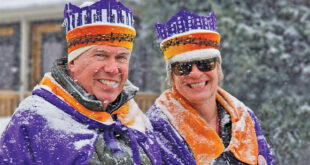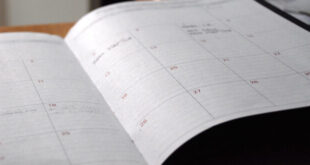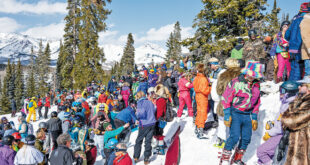“These are guys who built America”
—Jim Schmidt
By Toni Todd
The year was 1884. The town of Crested Butte was just four years old. Four hundred hearty souls lived here, with about 1,000 miners residing in camps nearby. The miners were mostly immigrants, from Wales, Cornwall, Ireland and Scotland.
Morgan Neath was just 17 years old, a mule driver responsible for leading the big animals through the tunnels, hauling heavy cars loaded with ore from the mine. His baby brother, 12-year-old William Neath, was a gatekeeper, along with Tommy Lyle, also 12.
It was a cold, early morning, January. 24 when tragedy struck. A massive explosion shook the town and ripped through the Jokerville Mine, killing 59 men. Morgan, William and Tommy all perished in the blast. “The boys were all found at the entrance to the mine,” says Crested Butte assistant town clerk Betty Warren.
Three older men who died that day are identified with individual grave markers at the Crested Butte Cemetery. Warren says they may have been among the few miners with families, and that’s why they were buried separately. They may also have held a higher status at the mine.
“They were in their 40s,” says Crested Butte town councilman Jim Schmidt. “So, they’re suspected to be bosses.” Most of the miners, those who toiled in the dank, air-starved shafts, were worker bees with no prestige, and no families. Their bodies, many badly mutilated, were dropped into a hole, and covered with dirt and snow. They were no doubt mourned briefly, but never commemorated. Until now.
“It struck me for quite a few years that there was such a little marker,” says Schmidt, who is spearheading an effort by the town to acknowledge and pay homage to these men. “Just to think that these people were totally forgotten,” he says.
When it happened, word of the tragedy traveled across the country, fast. The New York Times reported the day after the disaster, “The explosion was of such force as to completely barricade the main entrance. The appliances for supplying air were badly wrecked and the roof of the tramway was blown off. The men at work on the anthracite mesa, the night force of the Colorado Coal and Iron [CF&I] Company’s mines, and the citizens generally, have been working hard all day to rescue the men, although it is thought that none of them can possibly escape alive. The Town Hall has been prepared for the reception of the dead.”
Historical accounts, including an artist’s rendering, say a blacksmith’s shop, not Town Hall, was actually used as the temporary morgue until a grave could be dug. Most likely, says local historian and storyteller Dr. Duane Vandenbusche, since the ground was frozen, they used dynamite to create the hole.
“At present,” according to New York Times article, “everything is in such confusion that it is impossible to give details. A special train left Gunnison City at 2 o’clock this afternoon with surgeons and a large number of citizens to render all the aid possible.
“The town of Crested Butte is in mourning,” the Times reported. “Crowds of women cluster about the entrance to the mine wringing their hands and crying piteously, presenting a most heart-rending scene. It is said that at the time of the explosion, there were 10 kegs of black powder in chambers 1 and 2, where the men were working, and is where the explosion is supposed to have taken place.”
Vandenbusche says most of the miners were single young men. Only five of those who were killed that day had families in Crested Butte. After the disaster, he says, all those families left town.
“The men working in chambers one and two of the mine were killed immediately,” says Vandenbusche.
The Times said the explosion was likely caused by “fire-damp,” the term used for methane gas mixing with air and coal dust, a volatile concoction.
There were heroes that day, too. Vandenbusche tells the tale of miner Johnny Cashion, who led 11 men 1,800 feet from chamber four of the mine out into the open. “They made it in the dark, straddling bodies as they came out,” he says. “When these men came out of the mine, a big cheer went up because Crested Butte thought, ‘Maybe we’re going get a miracle here and other guys are going to come out.’”
Sadly, says Vandenbusche, that was not the case. “Twenty men died within 200 feet of getting out of the mine,” he says. “They were completely uninjured, but because the fan had been smashed to smithereens by the explosion, they ran out of air. Those guys were found with handkerchiefs over their mouths.”
At the time, the Jokerville Mine explosion was the worst mining disaster ever in Colorado. Today, it stands as the state’s third most deadly.
Of course, says Vandenbusche, “The mining company put all the blame on the miners.”
A supervisor from the CF&I told the New York Times, “We send a mine viewer through every chamber each morning before any of the men are allowed to go in, and he must have returned this morning before the workmen started in, and everything must have been all right when he passed through the workings.”
This comment belied the Jokerville Mine’s sketchy reputation. “The mine has long been considered dangerous by those acquainted with it,” said the Times article. “While one of the best producing mines in the country, its operation has always been attended with more or less apprehension and real danger.”
CF&I ran mining operations throughout Colorado, and in Crested Butte until 1952. It’s the same company responsible for the infamous Ludlow Massacre of 1914, when the company, supported by the Colorado National Guard, attacked striking miners at their camp. Some two dozen were murdered, including two women and 11 children.
“When the bank blew up, there were three young ladies who died,” says Schmidt, referring to a devastating propane explosion more than a century later at the Crested Butte State Bank in 1990. At that time, he says, “The town felt strongly—it named a town park in their honor. To think there was nothing for those miners,” he says. “The memory is how callus people were.”
In the early 1990s, Warren says town manager Bill Crank put up a plaque with most of the miners’ names. That plaque, still hanging on the iconic pedestal/ship’s wheel marker in the Crested Butte Cemetery, will be removed. Warren says she’s working to compile a more accurate, complete list of names.
A new wrought-iron fence will be built to surround the mass grave where the men killed in the Jokerville Mine now rest. “We’ve hired local John Murphy to do the ironwork,” says Warren. “He was an awesome choice. We wanted to preserve this place in a way that was indicative of the simplicity of these men’s lifestyle,” she says, and he’s done that.
The fence, Warren says, will include cutouts depicting a miner’s pick and shovel. “It will be a well-crafted, respectful, sturdy iron fence.” Warren says they also know better today the exact location of the grave, and will be sure to enclose the entire area, to include the individual markers. The town has commissioned Carlson Memorials in Grand Junction to build two rustic benches and a headstone engraved with all the miners’ names. Warren says the headstone will be carved to reflect the outline of the surrounding mountains. The pedestal/ship’s wheel marker will remain.
An official rededication ceremony is scheduled for Friday, September 29 at 3 p.m.
The Crested Butte of old is gone. But some who call this place home today, like Schmidt, believe the spirit and contributions of those who came before, and especially these men, whose work fueled a growing nation with steel, railroads, and power, deserve recognition. “These are guys who built America,” Schmidt says.
 The Crested Butte News Serving the Gunnison Valley since 1999
The Crested Butte News Serving the Gunnison Valley since 1999



